Space Environmental Viewing and Analysis Network (SEVAN)
Proposal endorsed for implementation by UN/NASA/ESA
as a world-wide network of instruments for the
International Heliophysicsl Year 2007
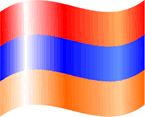 |
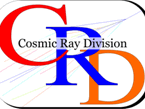 |
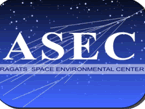 |
Space Environmental Viewing and Analysis Network (SEVAN)
A Middle-to-Low Latitude Particle Detector Network for Space Weather Research
Principal Investigator: Ashot Chilingarian, Aragats Space Environmental Center of the Cosmic Ray Division, Alikhanian Physics Institute, Armenia
A network of middle to low latitude particle detectors called SEVAN (Space Environmental Viewing and Analysis Network) is planned in the framework of the International Heliophysical Year (IHY), to improve space weather forecasting research and alerts. The network will be flexible to detect more than one species of particles and provide directional data.
Particle beams, accelerated at the Sun are superimposed on the uniform and isotropic Cosmic Ray (CR) background from galactic and extragalactic sources. Space-borne spectrometers measure the time series of the changing fluxes with excellent energy and charge resolution. Surface detectors measure time series of secondary particles born in cascades originated in the atmosphere by primary ions. Studies of these particles shed light on the high-energy particle acceleration mechanisms by flares and Coronal Mass Ejection (CME) driven shocks.
Time series of intensities of high energy particles can provide highly cost-effective information on the key characteristics of the interplanetary disturbances. Because cosmic rays are fast and have large scattering mean free paths in the solar wind, this information travels rapidly and may prove useful for space weather forecasting. Size and occurrence of the southward magnetic field component in Interplanetary CMEs (ICMEs) is correlated with the modulation effects the ICME poses on the ambient population of the galactic cosmic rays during its propagation up to 1 AU. On the way to Earth (15 – 50 hours) the magnetic cloud and shock modulate the Galactic Cosmic Ray (GCR) flux, making it anisotropic. Surface monitors located at the Aragats Space Environmental Center (ASEC) on Mt. Aragats at 2000 and 3200 m altitudes ( 40˚30′N, 44˚10′E. Cut-off rigidity: 7.6 GV) detect charged and neutral components of the secondary cosmic rays with different energy thresholds and various angles of incidence (see Table 1 and see Figure 1 for a schematic view of the new detector at ASEC). This richness of information coupled with the simulation of the physical phenomena, can be used to estimate the shock size and the magnetic field “frozen” in the ICME.
Table 1: Characteristics of ASEC Monitors (see also Fig. 1)
Consequently, one can predict the upcoming geomagnetic storms hours before the ICME arrival at the magnetometers on ACE and SOHO . The half-hour lead time provided by the L1 monitors is a bit short to take effective mitigation actions and protect satellites and surface industries from harm of major geomagnetic storms. To identify the major sources of error in the predictions, we need to measure, simulate and compare: (1) time series of neutrons, the low energy charged component (mostly electrons and muons) and the high energy muons); (2) the correlation between changing fluxes of various secondary particles; and (3) directional information
Based on our experience (see References 1-4) with data analysis of multivariate time-series from ASEC monitors, we designed and fabricated several new-types of particle detectors to meet the above goals. In order to keep the instruments inexpensive the options are kept flexible by using modular designs. The price of a fully autonomous single unit (see figure 2), with facility to send data to the internet will not exceed $20,000 US, so that the network of nations involved in space research can be significantly expanded to enable them to participate in IHY. At any time one can cascade these single units to achieve additional functionality: for example, add several new observational directions and improve accuracy of predictions. Like the world network of neutron monitors, the new monitors will measure the neutron fluxes and in addition they will measure charged particle fluxes with different energy thresholds, thus allowing the investigation of additional populations of primary ions. These units can be deployed in exiting networks as well as will be used in SEVAN, the new middle-to-low latitude Space Environmental Viewing and Analysis Network
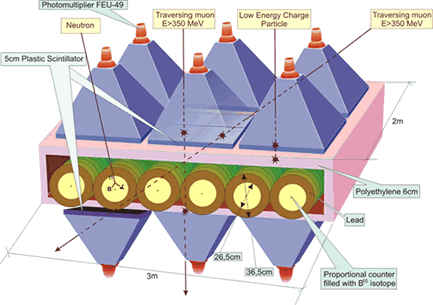
Figure 1 Schematic diagram of the basic detector for muons and neutrons installed at the Aragats Space Environmental Center, Armenia.
(click here for a larger image)
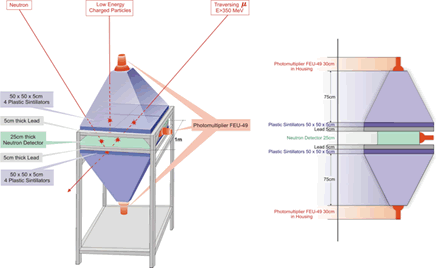
Figure 2Prototype detector for the Space Environmental Viewing and Analysis Network (SEVAN) – a middle-to-low latitude Space Weather Network
(click here for a larger image)
The network is planned to be installed at middle and low latitudes and will be compatible with the currently operating high latitude particle detector network Spaceship Earth, coordinated by the group from Bartol Research Institute of University of Delaware in USA, the Solar Neutron Telescopes network coordinated by the Nagoya University and the Muon network coordinated by the group from Shinshu University in Japan.
The potential recipients of particle detectors in this new initiative are Croatia, Costa Rica, Georgia, Bulgaria, Kazakhstan, Tibet (China), Egypt, and Indonesia. We expect that particle fluxes measured at the medium to low latitudes with the SEVAN network, combined with information from satellites and detector networks at high latitudes, can reduce the number of “false alarms” in alerting on severe radiation and geomagnetic storms, as well as increase the reliability of the alert system.
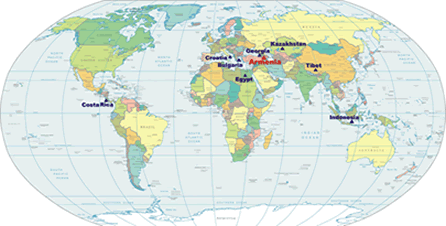
Figure 3 Space Environment Viewing and Analysis Network (SEVAN)
(click here for a larger image)
References:
- A.Chilingarian for the ASEC team, (2005) Correlated Measurements of Secondary Cosmic Ray Fluxes by the Aragats Space- Environmental Center Monitors,NIM-A, 543, 483-496
- N.Gevorgyan for the ASEC team, (2005) Test Alert Service Against Very Large SEP Events, Advances in Space Research (ASR), Vol. 36, issue 12, pp 2351-2356
- A.Chilingarian, K.Avakyan et. al, Aragats Space-Environmental Center: Status and SEP Forecasting Possibilities, Journal of Physics G:Nucl.Part.Phys., Vol.29 (2003), pp 939-952.
- A.Chilingarian for the ASEC team, Monitoring and Forecasting of the Geomagnetic and Radiation Storms During the 23rd Solar Cycle. Aragats Regional Space Weather Center, Advances in Space Research, Vol. 31 (2003), pp 861-865.